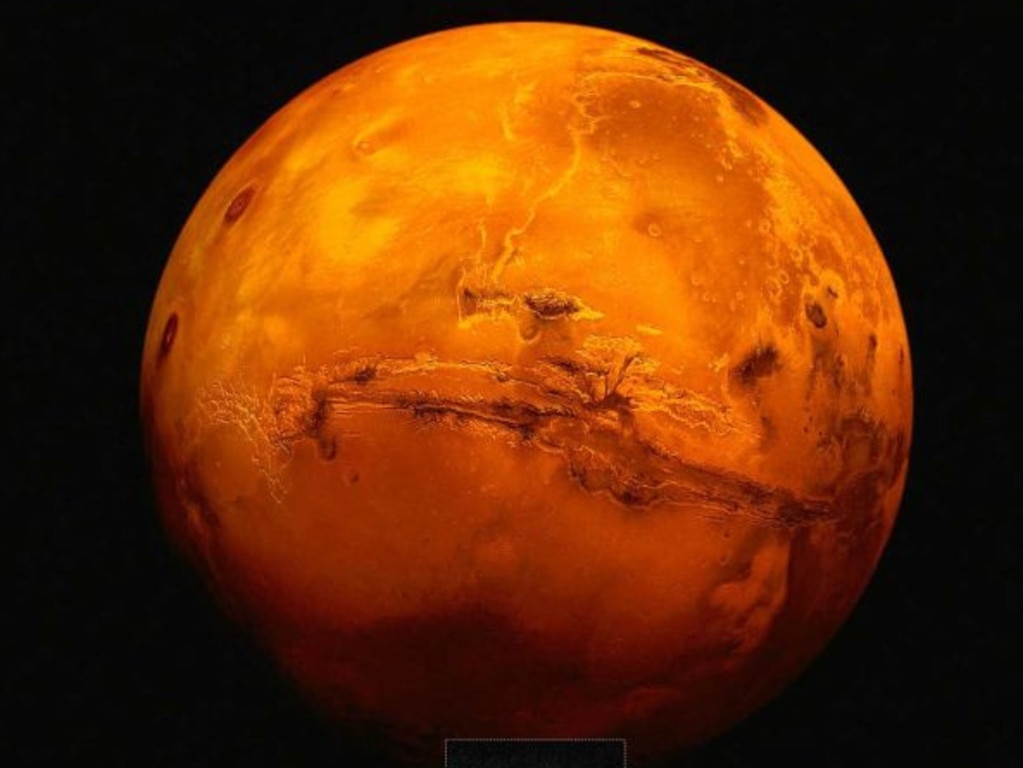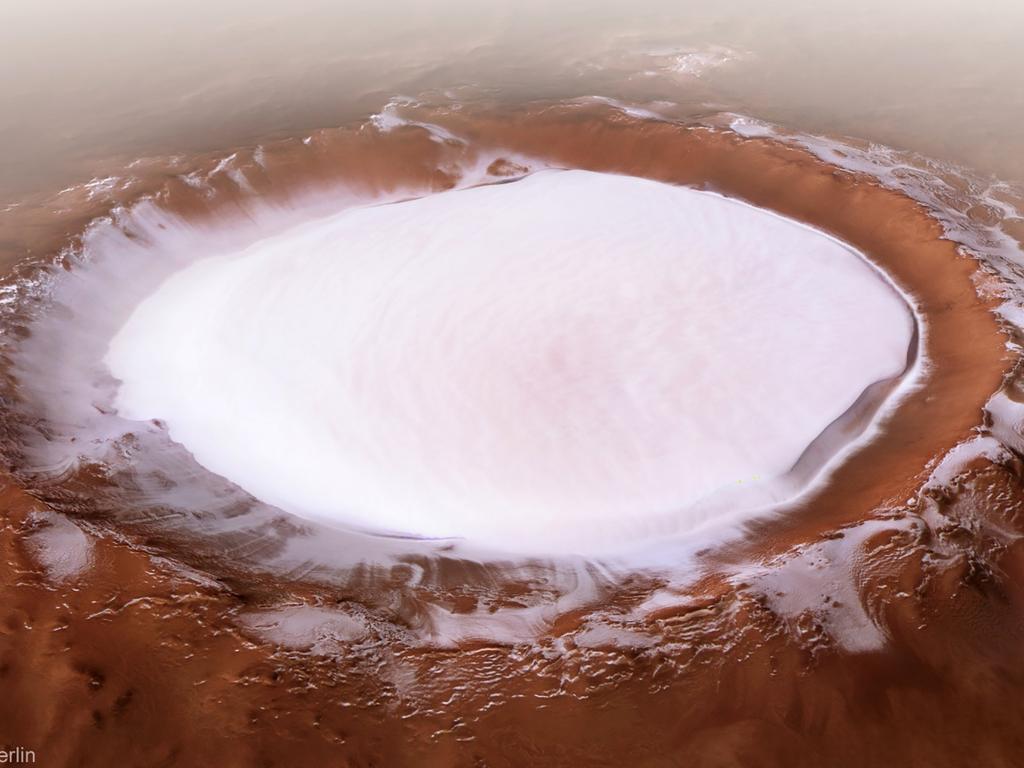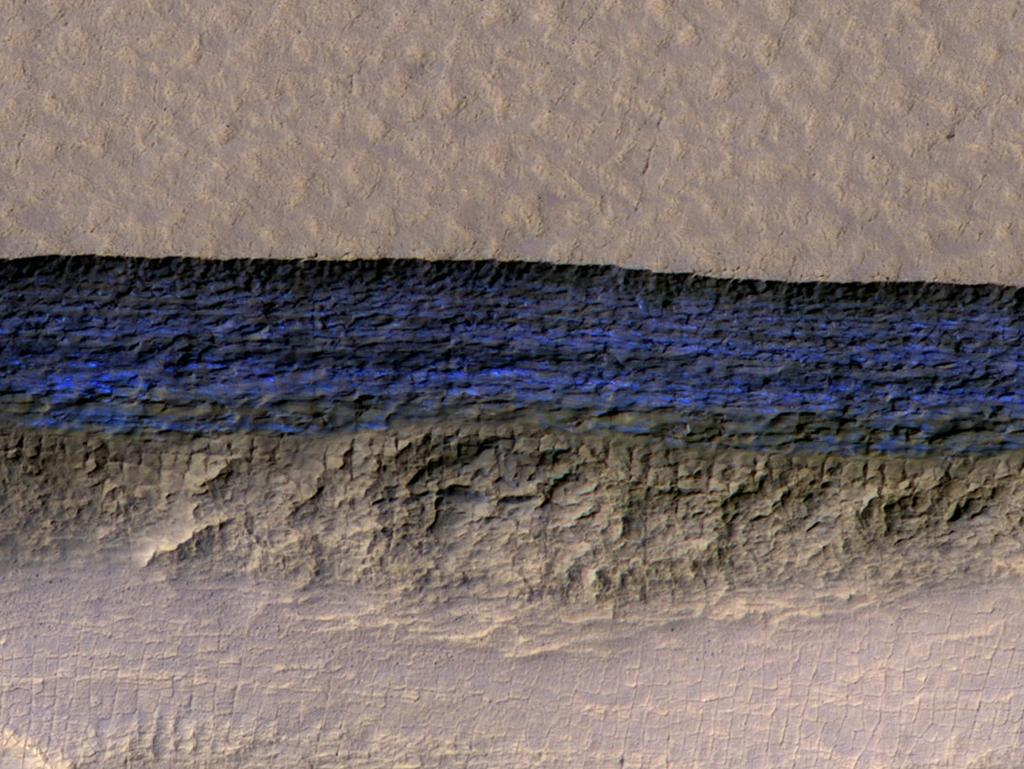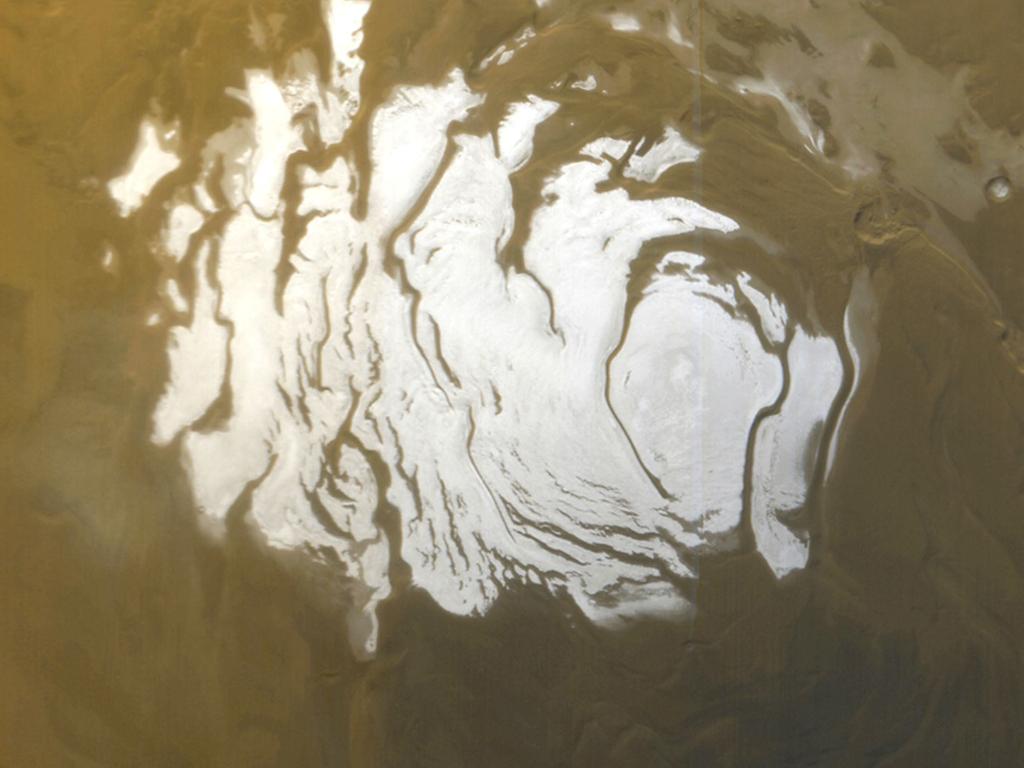Hidden ocean discovered on Mars
A hidden ocean has been found on Mars that “could cover entire planet with a mile of water” and “should be able to sustain life”.
Water that could cover Mars with a kilometre-deep ocean has been found beneath the red planet’s surface, scientists says.
Evidence for an enormous reservoir of liquid water offers fresh hope of discovering proof of alien life on Mars.
The discovery was made by monitoring seismic activity on the red planet – all collected by Nasa’s InSight lander.
Scientists have long believed that Mars had vast oceans of water billions of years ago – now vanished from the surface.

Some of Mars’ water is locked away in ice, including as polar permafrost.
Now scientists says seismic data suggests there’s an enormous supply of water in the cracks and pores of deep subsurface rock, The Sun reports.
The bad news is that it’s so deep that it’s unlikely human colonists will ever be able to tap into it.
It’s estimated that it’s around 11.5 to 20 kilometres below the surface, or roughly seven to 12 miles deep.
That means it won’t be able to function as a water supply for anyone setting up long-term bases on the red planet.

But the discovery can give us a better idea of Mars’ ancient history – and how it will change in the future.
“Understanding the Martian water cycle is critical for understanding the evolution of the climate, surface and interior,” said Vashan Wright, assistant professor at UC San Diego’s Scripps Institution of Oceanography.
“A useful starting point is to identify where water is and how much is there.”
Importantly, the discovery could help scientists in their ongoing quest for evidence of alien life.
Liquid water is needed for life – at least as we know it – so it’s possible that extraterrestrial organisms live in these deep parts of Mars.

“Establishing that there is a big reservoir of liquid water provides some window into what the climate was like or could be like,” said Michael Manga, a UC Berkeley professor of earth and planetary science.
“And water is necessary for life as we know it. I don’t see why [the underground reservoir] is not a habitable environment.
“It’s certainly true on Earth — deep, deep mines host life, the bottom of the ocean hosts life.
“We haven’t found any evidence for life on Mars, but at least we have identified a place that should, in principle, be able to sustain life.”
NASA sent its InSight lander to Mars back in May 2018.

It was tasked with investigating the crust, mantle, core, and atmosphere of the red planet.
Eventually the lander’s solar panels were overcome by dust, preventing it from recharging.
The lander was placed into low-power mode for detecting these seismic events in mid-2022, before ending its mission in December that same year.
NASA declared that all communications between InSight and Earth had been lost on December 15, 2022.
And its official end-of-mission date was December 21, 2022.
Despite only being active on Mars for just over four years, InSight collected an enormous trove of data that’s still being used for discoveries today.
“The mission greatly exceeded my expectations,” Manga explained.
“From looking at all the seismic data that Insight collected, they’ve figured out the thickness of the crust, the depth of the core, the composition of the core, even a little bit about the temperature within the mantle.”
The research was published in the journal Proceedings of the National Academy of Sciences.
This story was published by The Sun and reproduced with permission
Originally published as Hidden ocean discovered on Mars


